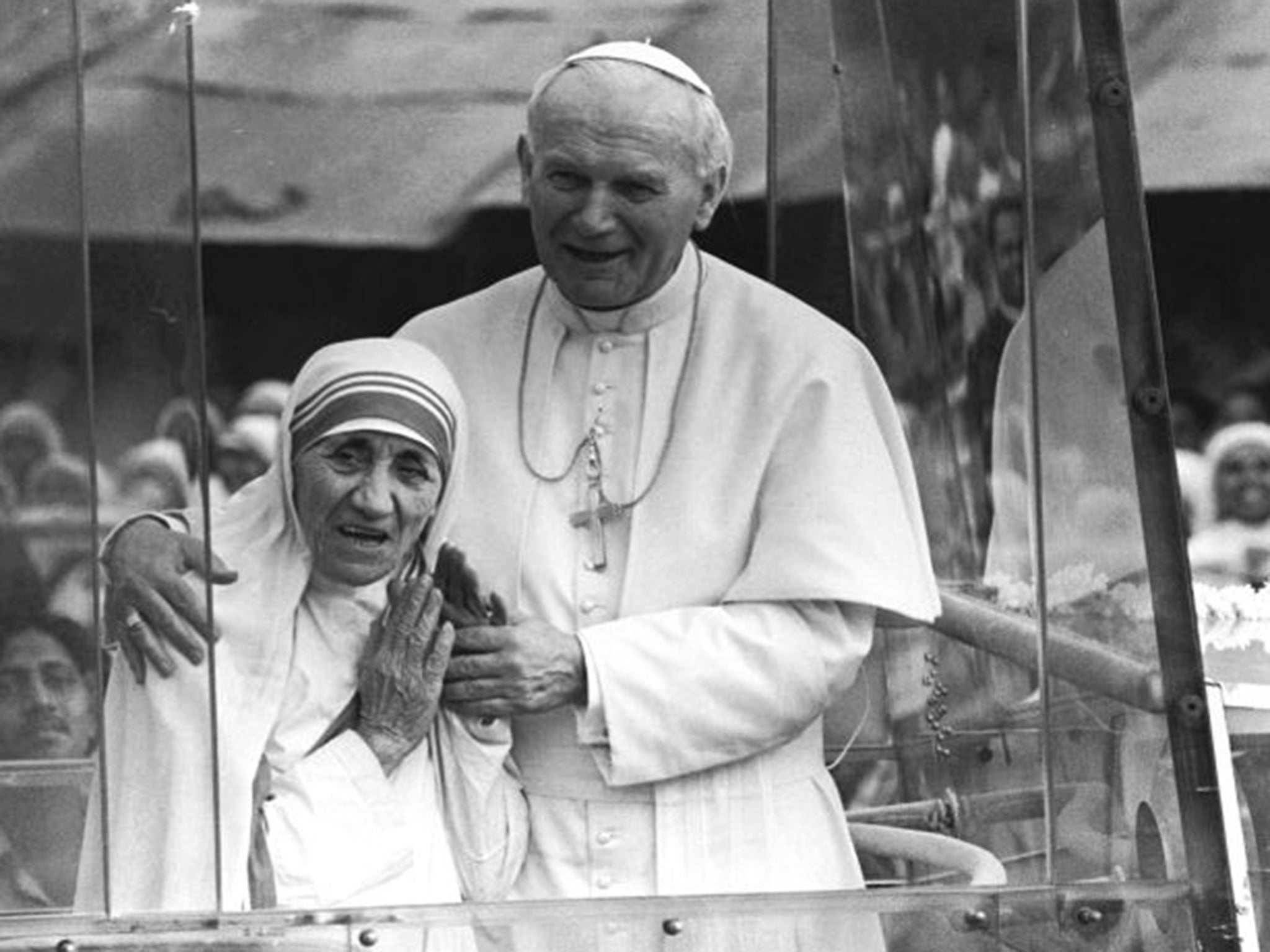As Mother Teresa is canonised, the debate remains about how saintly she really was
She is accused of taking donations from scoundrels of every sort


Mother Teresa is to be canonised, completing the fastest process of sainthood in church history. The second miracle required to convert beatification into sainthood was of a Brazilian man, who allegedly recovered instantaneously from a viral brain infection as he was on the point of being operated on.
But 18 years after her death, the small nun born to Albanian parents in 1910 and awarded the Nobel Peace Prize for her work with the dying in 1979 is still highly controversial beyond the ranks of conservative Catholics.
Like her close friend and admirer Pope John Paul II, the man who set her on the course to sainthood, she was a fierce defender of traditional Catholic doctrine on the so-called “life issues” of contraception, abortion, and so forth. But in those respects she was merely orthodox. What attracted fierce and specific criticism was the way in which she carried out her chosen task among India’s poorest of the poor. Remove the venom and there is still much substance in those attacks today.
The crux of the complaints is that, rather than trying to cure the dying people whom she rescued from Calcutta’s streets, to better their condition and help them fulfil their potential, she merely provided basic facilities in which they could “die beautifully”, in her favourite phrase. “There is something beautiful in seeing the poor accept their lot, to suffer it like Christ’s passion,” she was quoted as saying. “The world gains much from their suffering.” As Christopher Hitchens put it in The Missionary Position, his vitriolic essay about her and her work, the lives of the lepers, orphans and terminally ill who passed through her hands were “raw material for the demonstration of compassion... They are in no position to complain, and their passivity is considered a sterling trait.”

The other charge is that Mother Teresa (above) accepted donations and awards from scoundrels of every sort: an award from the Duvalier family, the hereditary tyrants of Haiti, a donation of $1.25m (£840,000) from the American swindler Charles Keating, who used the letter of recommendation she wrote for him to try to win the favour of the court after he was convicted of defrauding savers of $252m. There were many other such tales.
Both accusations are well documented; one can imagine Mother Teresa listening to them with an indulgent smile on her wrinkled face. These were the ways – she might have explained, if she was given to explaining herself – in which a modern western nun went native. For centuries Christian missionaries fanned out across the developing world, working night and day to win heathens to the Christian path and abandon the wicked customs of their homelands. In contrast, Mother Teresa in her homespun sari went with the flow, choosing to adopt rather than confront India’s core customs.

Anjeze Gonxhe Bojaxhiu had already been a sister in India for 17 years when in 1946 she heard God telling her to live among the poor and help them by founding her own order. With the indomitable will power that she demonstrated for the rest of her life, she established the Missionaries of Charity, and set up her first and most famous “House for the Dying” in Calcutta.
She built it next to a Hindu temple dedicated to the fearsome goddess Kali, who has three eyes, a necklace of human skulls and a tongue like an elephant’s trunk. Looking upon the sick and dying who in those days littered Calcutta’s streets as untouchable and polluting, the Brahmins of the temple did all in their power to shut her operation down. Like all who tried to thwart her, they failed. Her order expanded at extraordinary speed: by the time of her death it operated 602 homes of various sorts in 125 countries. Her examples inspired tens of thousands to change their lives and follow her.
One reason for the speed at which the order grew was that the service its homes provided was rudimentary. Beggars and the homeless were offered food; the sick were given shelter and cleaned up and allowed to remain until they recovered or died, but no sophisticated medical care was given to them. Many of the inmates in Calcutta were young people suffering from tuberculosis. With the right sort of drugs, many would have recovered. Instead they were allowed to die “beautifully”.
There is something shockingly sentimental about identifying beauty in suffering when it could, with some care and attention and expense, be relieved. But it resonates with the ancient Hindu idea that one’s destiny is determined by the caste into which one is born (or indeed not born, in the case of so-called untouchables). Unlike previous Christian missionaries, Teresa did nothing to challenge the caste system, to offer a brighter prospect to her charges than dying clean. As a result, once it had got over the shock of seeing them embracing the untouchable, India took her and her sisters to its ample heart.
After her death, the Brahmins who had tried to close her first home joined the rest of India in hailing her heroism. “All the Brahmins of Kali Temple are deeply shocked by the death of our beloved Mother,” Brahmin Bapi Chakravorty told me when I visited his temple at the time of her funeral in 1997. “We pray to God to let her be born again and again.”
Join our commenting forum
Join thought-provoking conversations, follow other Independent readers and see their replies
Comments
Bookmark popover
Removed from bookmarks